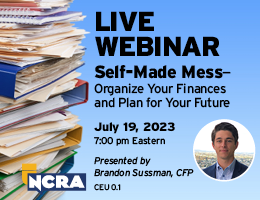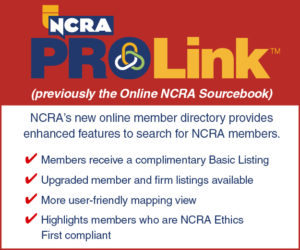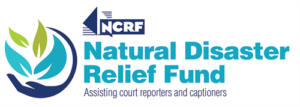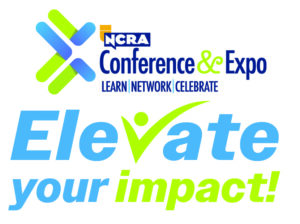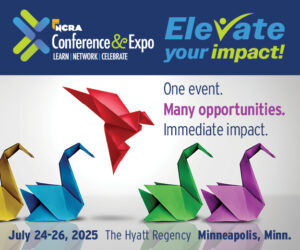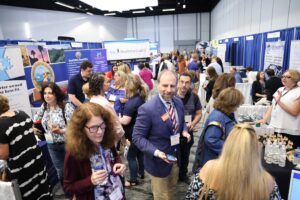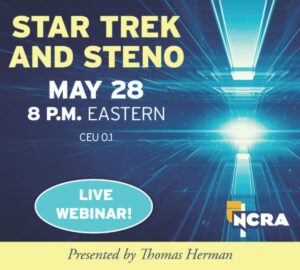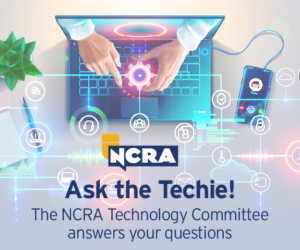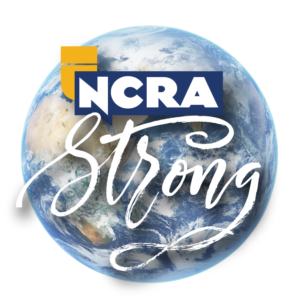 By April Weiner
By April Weiner
Since its creation in 2010, NCRF’s Legal Education Program has helped hundreds of court reporters give presentations to lawyers, law schools, and judges on the importance of and the court reporter’s role in “Making the Record.” The Legal Ed materials teach law students and attorneys how to help the court reporter deliver the best record.
Reporters can deliver the best record when they can hear and understand the speakers, and when they are prepared ahead of time, whenever possible (i.e. providing industry-specific terms and names that may be used).
“If our brain has to suddenly ask itself a question and kind of sound out to our inner self what someone said because they mumbled or [we’re] kind of reading lips for the low speaker, well, that just slowed my fingers down,” says Christine Phipps, RPR, a firm owner in North Palm Beach, Fla., and one of the co-chairs of NCRA’s Technology Committee, who helped orchestrate the committee’s recent revision of the materials.
Another step in delivering the best record is recognizing for whom the transcript is being prepared.
“At the time of trial, a senior partner in the firm will actually be the person using the transcript and, therefore, will be unable to use their memory of what transpired,” says Kevin R. Hunt of Jack W. Hunt & Associates in Buffalo, N.Y., who has given many of these presentations and even authored the sample script. “If a witness nods [his or her] head or points to a place on an exhibit, that will be either open to interpretation as to the witness’s response or completely unknown. Making sure everything is verbal and uttered one person at a time ensures that regardless of who reviews the transcript, they will have an unambiguous understanding of what the witness was testifying to.”
Furthermore, the transcript is critical in the appeals process.
“In most instances, an appellate court can only review the proceedings below from a court reporter’s transcript,” says Teresa Kordick, RDR, CRR, CRC, CRI, CPE, an official from Des Moines, Iowa, and a trustee on the National Court Reporters Foundation’s board. “What is contained in that transcript is the record made by counsel, the witnesses, and the judge. It is essential that attorneys and judges know how to make good record so that the reviewing court can properly decide the case.”
Kordick used the Legal Ed materials as a starting point to modify a presentation to judges at the Judicial Branch Building, which houses the Iowa Supreme Court and Iowa Court of Appeals. Both she and Merilyn Sanchez, RMR, CRR (Ret.), of Chandler, Ariz., one of the founders of the program, stress the importance of tailoring the presentation to the audience.
“The materials are meant to be modular and easily personalized for whatever audience the reporter has,” Sanchez says. “Many lawyers would not be interested in how to schedule a deposition or what to do in preparation to assist the court reporter. You can skip over the basics and get right into the technology demonstration. Some lawyers prefer to leave the technology to their paralegals or second chair attorneys, who might be a better audience for a realtime focus.”
Keeping the law firm’s individual needs in mind helps tailor the presentation.
“If a law firm needs assistance in using realtime, a script is included to use in a realtime demonstration. You can do a quick explanation of what you can do during a realtime demonstration or actually incorporate whatever litigation support software the attorney uses into the basic presentation,” says Sanchez.
The Legal Ed materials have recently been revised to include up-to-date technological advancements in the industry.
“Many lawyers have not kept abreast of the latest technology in making a record,” says Sanchez. “It is important to educate lawyers about realtime reporting, video synchronization, and how to make the best choice for their reporting needs. Legal Ed was designed to assist reporters to educate lawyers at any level of technology sophistication.”
Technological advancements will vastly change how attorneys practice law, says Phipps.
“Streaming realtime, a live feed to everything said as it’s being said, all around the globe is now very simplistic and interactive, bringing the proceedings to wherever you may need to be. Delivering final transcripts to be used in imminent examinations in minutes is an absolute game changer,” says Phipps.
NCRF’s Legal Education Program materials include a sample presentation outline, a PowerPoint presentation, handouts, and a script. There are a number of ways court reporters can take advantage of these materials.
“Take any opportunity available to you to speak with judges, lawyers, and law students,” says Kordick. “It is always appreciated by those groups, and it benefits the reporters if we can make their (and our) jobs a little easier.”
Law Day is celebrated each year on May 1, and many chapters of the American Bar Association, courts, and lawyers plan special events on this day. This can be a good opportunity for court reporters to be included and present on behalf of the profession. Court reporters can reach out to local ABA chapters or law firms to inquire about being included at these events.
Since the Legal Ed materials are particularly applicable to law students and young attorneys, reporters can also reach out to local law schools and firms to see if they’d be interested in a presentation.
“Use this education program to get your foot in the door with either the lawyers or their support staff and lay the foundation for a great relationship,” Sanchez said.
In addition to benefitting from lawyers understanding the profession better, court reporters can apply to receive Professional Development Credits (PDCs) for giving the presentation. A subset of Continuing Education Units, PDCs can account for up to 1.0 units per education cycle for NCRA court reporting members who are fulfilling their education requirements.
The presentation benefits the firm as well, since it results in improved transcripts that help lawyers do their jobs better, at no cost to the firm.
“Speaking at law schools or law firms is a wonderful opportunity to encourage attorneys to help you help them,” said Hunt. “The goal is a clear and usable transcript, and if they follow the suggestions in the Legal Ed presentation, it will go a long way to ensuring a transcript that meets or exceeds their expectations.”
If presenting to a law firm, the attorneys that attend such a presentation may be eligible to earn continuing legal education credits. Since each state has different CLE requirements, the law firm will have to contact their state bar to determine eligibility.
For more information on the Legal Education Program and to get the materials, visit NCRA.org/ncrf/LegalEd.
April Weiner is the Foundation Assistant for the National Court Reporters Foundation. She can be reached at aweiner@ncra.org.



